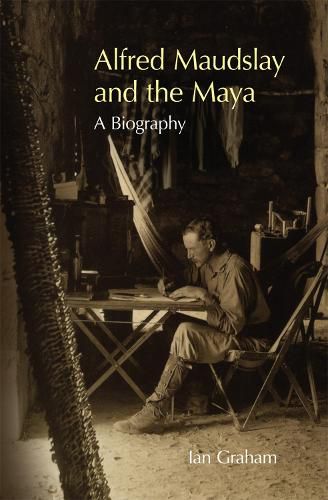Readings Newsletter
Become a Readings Member to make your shopping experience even easier.
Sign in or sign up for free!
You’re not far away from qualifying for FREE standard shipping within Australia
You’ve qualified for FREE standard shipping within Australia
The cart is loading…






In this fascinating biography, the first ever published about Alfred Maudslay (1850-1931), Ian Graham describes this extraordinary Englishman and his pioneering investigations of the ancient Maya ruins.Maudslay, the grandson of a famous English inventor and engineer, spent his formative adult years in the South Seas as a junior official in Great Britain’s Colonial Office. Despite his exotic experiences, he did not find his true vocation until the age of thirty-one, when he arrived in Guatemala.
Maudslay played a crucial role in exploring and documenting the monuments and architecture of the ancient Maya ruins at Palengue CopAn, ChichEn ItzA, and other sites previously unknown. His photographs and plaster casts have proven to be invaluable in the deciphering of Maya hieroglyphics. Personal resources allowed him to undertake fieldwork at a time when no institution provided such support. He made plaster casts of large stone monuments, accurate maps of sites, and painstaking recordings of inscriptions. His Biologia Centrali-Americana, a multivolume compendium of photographs, drawings, plans, and text published almost a century ago, remains an essential foundation for Maya studies. Perhaps Maudslay’s greatest legacy is magnificent collection of glass-negative photographs, many of which are reproduced in this book.
$9.00 standard shipping within Australia
FREE standard shipping within Australia for orders over $100.00
Express & International shipping calculated at checkout
In this fascinating biography, the first ever published about Alfred Maudslay (1850-1931), Ian Graham describes this extraordinary Englishman and his pioneering investigations of the ancient Maya ruins.Maudslay, the grandson of a famous English inventor and engineer, spent his formative adult years in the South Seas as a junior official in Great Britain’s Colonial Office. Despite his exotic experiences, he did not find his true vocation until the age of thirty-one, when he arrived in Guatemala.
Maudslay played a crucial role in exploring and documenting the monuments and architecture of the ancient Maya ruins at Palengue CopAn, ChichEn ItzA, and other sites previously unknown. His photographs and plaster casts have proven to be invaluable in the deciphering of Maya hieroglyphics. Personal resources allowed him to undertake fieldwork at a time when no institution provided such support. He made plaster casts of large stone monuments, accurate maps of sites, and painstaking recordings of inscriptions. His Biologia Centrali-Americana, a multivolume compendium of photographs, drawings, plans, and text published almost a century ago, remains an essential foundation for Maya studies. Perhaps Maudslay’s greatest legacy is magnificent collection of glass-negative photographs, many of which are reproduced in this book.